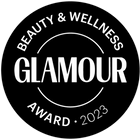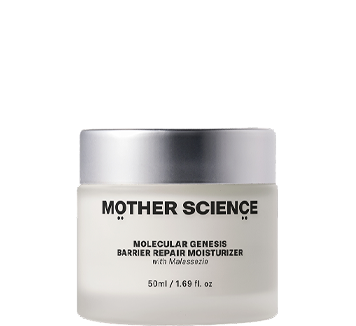Our dermatologist approved guide on how to reduce hyperpigmentation and prevent it from happening in the future.
If you feel like you’ve tried everything out there to lighten dark spots on your face or body, you may be curious about the newest way to reduce hyperpigmentation. Dark spots, sun spots, melasma and age spots – these are all different kinds of hyperpigmentation – a common condition caused by your cells producing too much melanin (your skin’s natural pigment). Melasma is the most common cause of uneven skin tone, affecting around 5 million people in the United States alone.

Although hyperpigmentation is not life-threatening, dark spots can be distressingly hard to treat. The good news is there are clinically-proven solutions out there that can safely improve your skin tone and texture. We consulted Dr. Pearl Grimes, leading world expert on hyperpigmentation. Here’s what Dr Grimes told us about what causes dark spots and how to treat them:
What Causes Hyperpigmentation?
Hyperpigmentation occurs when your skin cells are damaged or injured, resulting in inflammation. Your skin cells often react to injury by becoming hyperactive and overproducing melanin, causing dark spots and patches to appear on your skin.
Here are the three main causes of skin damage that can lead to hyperpigmentation:
1 – Sunshine:
Damage from exposure to ultraviolet rays (UV) from the sun is one of the main ways to trigger melanin overproduction in your skin. If you spend a lot of time in the sun, dark spots will start to appear around age 50. These small, flat dark areas on your skin are known as sunspots, liverspots or solar lentigines and they can vary in size from small freckles to larger patches.

2 – Inflammation:
A common cause of darkspots is what dermatologists call post-inflammatory hyperpigmentation. This occurs when your skin goes into an inflammatory response from conditions like acne. Inflammation can affect your skin’s ability to regulate melanin and may lead to an overproduction of pigment that causes dark spots.

3 – Hormones:
Hormonal changes can cause hyperpigmentation to form in larger patches called melasma. It’s common in people with thyroid conditions, women who use hormonal birth control, and during and after pregnancy. It is sometimes called the ‘mask of pregnancy’ because it shows up in a mask-like shape on your forehead, cheeks, chin, and nose. Darker skin-types are more prone to developing melasma and, because sunlight makes it worse, it can be frustratingly hard to control.

How to Reduce Hyperpigmentation, According to Dermatologists
When it comes to treating dark spots, these are the newest skincare ingredients to help reduce hyperpigmentation:
Innovative Skincare Ingredients That Can Reduce Hyperpigmentation:
Thanks to advances in scientific research, when it comes to topical skincare to prevent and reduce hyperpigmentation, there are new all-star ingredients that have been proven to even skin tone. Here are some of the most innovative ingredients you can add to your skincare routine to address hyperpigmentation:
Malassezin:
Malassezin is a naturally-occurring molecule that is found in the skin microbiome. After 6 years of research and testing, Mother Science’s patented molecule Malassezin has been clinically-proven to be an ultra-effective solution for hyperpigmentation.

Malassezin is so effective at reducing hyperpigmentation because it is a 10X more powerful antioxidant than vitamin C – that means Malassezin is 10x more effective than vitamin C at reducing dark spots and sun damage.

With consistent use morning and night, Molecular Hero Serum can visibly reduce hyperpigmentation starting in just two weeks without causing irritation or sun sensitivity. Malassezin is a completely new way to reduce hyperpigmentation, plus it also nourishes and protects your skin barrier for visibly firmer and smoother skin.

If visibly reducing hyperpigmentation is one of your skincare goals, Molecular Hero Serum can be a highly effective solution to add to your routine. Compared to vitamin C, Malassezin works faster and is more shelf-stable – vitamin C can quickly lose its potency when exposed to light or air but Malassezin remains fully effective until the last drop.
Retinol plus Malassezin:
Retinol is famous as the Dermatologist’s go-to ingredient for brightening skin and reducing the appearance of fine lines and wrinkles. Combined with Malassezin, Retinol Synergist harnesses the skin renewing benefits of retinol and the skin brightening power of Malassezin. Plus Malassezin delivers its own wrinkle-reducing benefits alongside skin barrier support to reduce any irritation that might be caused by retinol.

Dr Grimes recommends consistent use of retinol for your best results. Always start slowly with retinol – start by applying Retinol Synergist 1-2 nights a week until your skin has adapted. Then build up slowly as tolerated.”

All retinols can potentially cause skin irritation, purging, and skin barrier sensitization (redness and dry skin) but the 0.3% encapsulated retinol in Retinol Synergist is known to be gentler on sensitive skin. Malassezin also helps soothe and protect your skin barrier from potential irritation.
Acids (AHAs/BHAs/PHAs):
Acids are another type of ingredient that are effective in reducing hyperpigmentation. These are the main types of acids used to target dark spots:
-
- Alpha hydroxy acids (AHAs): including glycolic acid, lactic acid and malic acids.
- Beta hydroxy acids (BHAs): salicylic acid is the best known BHA and is also effective on acne.
- Polyhydroxy acids (PHAs): such as gluconolactone.
All these acids are chemical exfoliants which help reduce your dark spots by sloughing away dead skin cells and increasing skin cell turnover to deliver smoother and more even skin. They can all be safely used in conjugation with Malassezin to boost skin-brightening while protecting your skin barrier.
With topical formulas, consistency is the key to seeing a reduction in dark spots, sun spots, and other types of discoloration. Being diligent about following your skincare routine and applying (and reapplying) sunscreen throughout the day will yield the best results.
Shop Mother Science’s Best Selling Hyperpigmentation Solutions:
Clinically-Proven Hyperpigmentation Solutions
With consistent use morning and night, Malassezin visibly improves the appearance of dark spots and hyperpigmentation. And, because of its non-irritating nature, it can be safely added to your current skincare routine and used alongside retinol, acids, lasers, and more.
We want you to get your best results from Mother Science Products. That’s why we offer discounted bundles and 10% off all subscription orders.
At Mother Science, we create advanced products validated by science and clinical trials. We believe in our products, and we’re confident that you will love them too, but if you’re not completely satisfied, we offer free returns within 30 days of receiving your products.
Questions? Take a look at our FAQ page or reach out to us at hello@motherscience.com.










